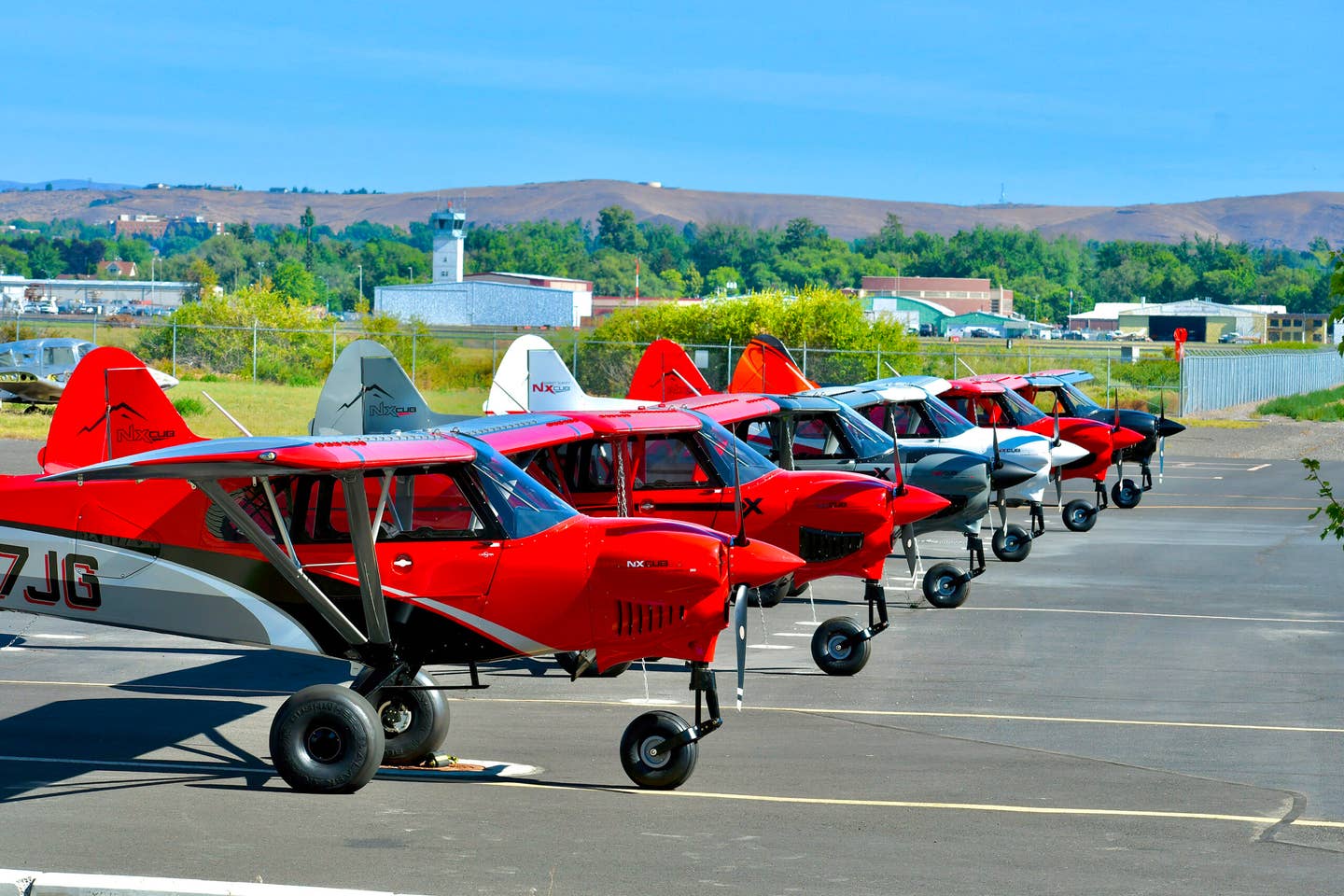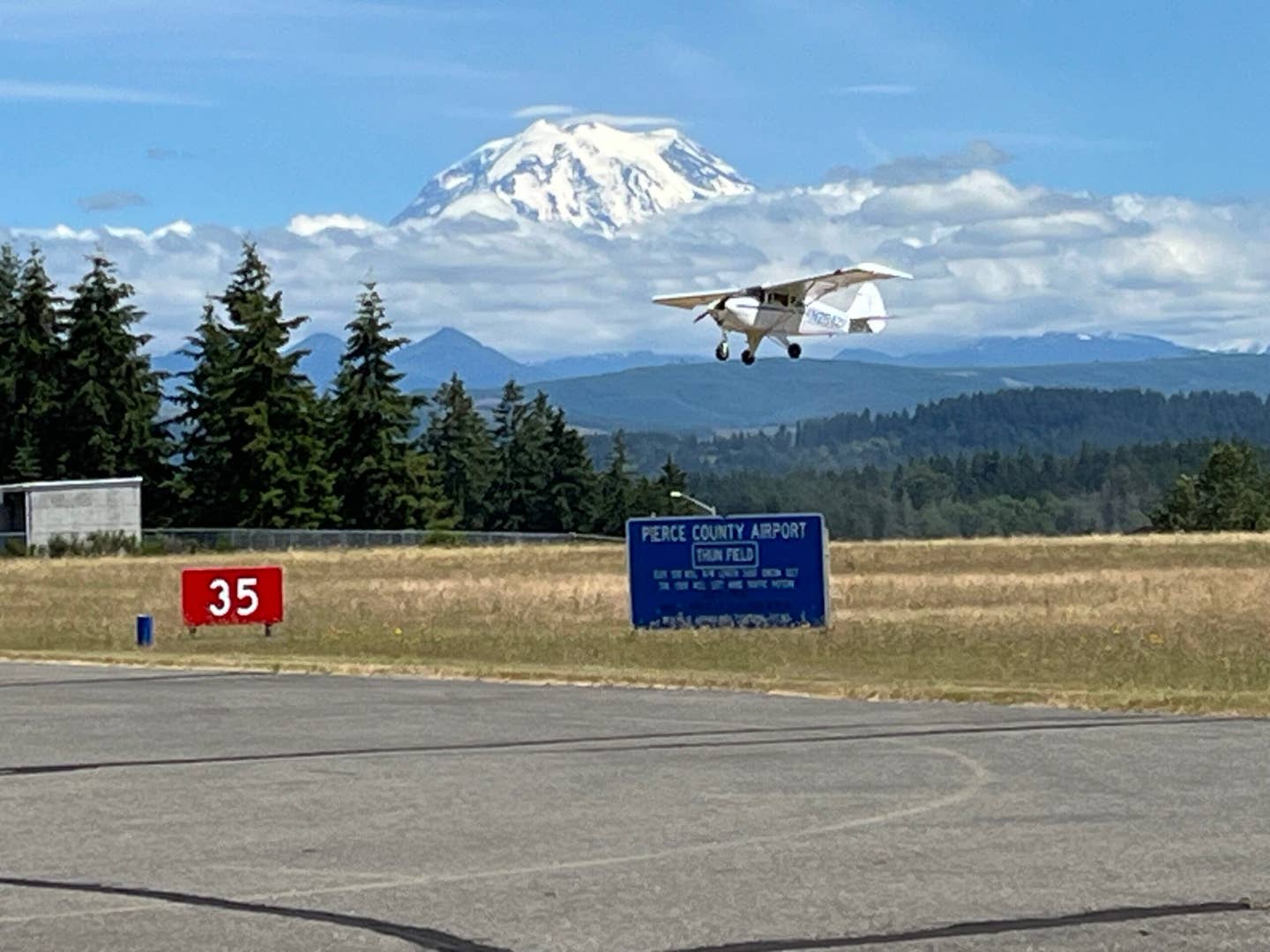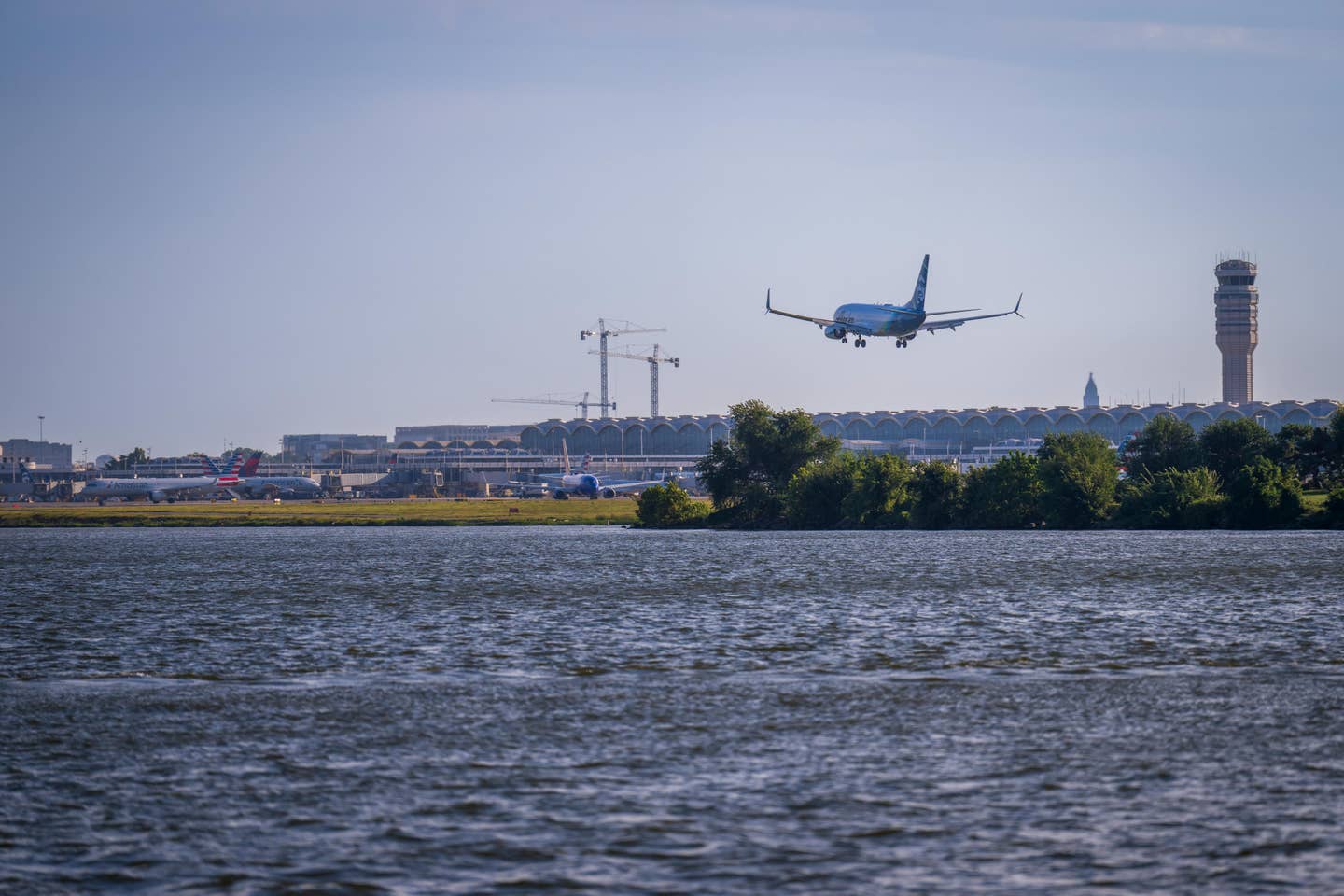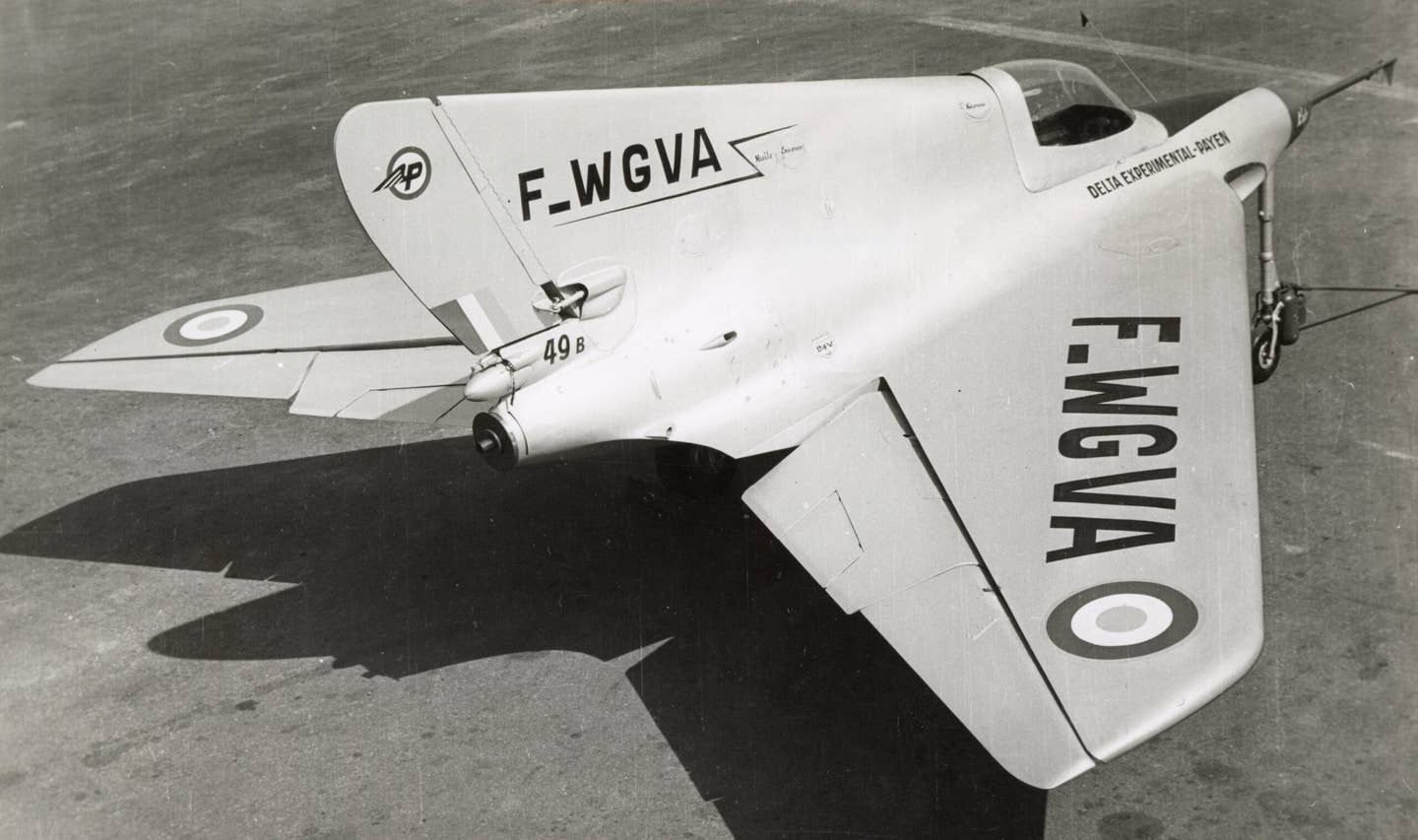
The 68-year-old, 600-hour pilot of a Lancair ES — a 310 hp four-seat composite kitplane that he himself had built — had had an instrument rating for almost seven years. Though he had logged 176 hours of simulated instrument time, however, he had spent only four hours in actual instrument conditions.
On an August morning in 2008, he and a single passenger filed IFR from Ketchikan, on the Alaska panhandle, to Mountain Home, Idaho. The great-circle distance is 960 nm, and the flight would take five hours or more. A cold front that extended southwestward from eastern British Columbia was bringing overcast ceilings and showers to parts of Washington and Oregon, but the forecast for most of the route was for VFR or marginal VFR conditions.
About 3½ hours into the flight, when the Lancair had passed Seattle and was cruising at 11,000 feet toward Yakima, Washington, it began a gradual descending turn to the right. The Seattle Center controller, noticing that the Lancair was no longer at its assigned altitude, asked the pilot to verify his altimeter setting. He did; but a minute later the airplane was still at 9,700 feet. The controller tried to contact the pilot again, but this time got no answer. The airplane had already disappeared from radar.
The wreckage was found at an elevation of 3,800 feet in densely wooded, mountainous terrain. The airplane had broken up in flight, losing first the left wing, then the right, then the horizontal stabilizer; the debris field stretched over half a mile.
A camera was found in the cabin. Shortly before the accident, the occupants had taken pictures of 14,411-foot Mount Rainier, 30 miles to the southwest. It was apparent from the photos that the Lancair, cruising just above a cloud deck that surrounded the mountain, was heading toward a band of higher clouds extending downwind from it. The tops of the higher clouds showed signs of mountain-wave formation — typically, a series of smooth humps that, when isolated and fully developed, become the lenslike ovoids called lenticular clouds. Comparison of the track of the Lancair with weather radar and satellite imagery of the area indicated that the airplane had entered that band of clouds and was in IMC when it began to descend.
National Transportation Safety Board investigators attributed the accident to "the pilot's failure to maintain aircraft control … due to spatial disorientation. Contributing to the accident [were] turbulence and clouds." Analysis of the wind profile revealed a possibility of anything from light to severe turbulence, depending on the assumptions fed into the computer simulation.
A few years ago, analysis of the accident would have ended at this point. It would have been assumed that the airplane had probably encountered severe turbulence, perhaps in a rotor or roll cloud downwind of the mountain, and that its violent gyrations had overwhelmed the relatively inexperienced instrument pilot, who became disoriented, perhaps panicked and overcontrolled the airplane.
Today, however, many airplanes are equipped, as this one was, with fully electronic instrumentation that records vast amounts of flight and powerplant data, providing accident investigators with the kind of information that used to be available only from the so-called "black boxes" on airliners.
The Lancair's avionics recorded 32 data streams at one-second intervals. From them, it was possible to reconstruct a detailed record of the final minutes of the flight. Furthermore, the flight data was fed into a deceptively inexpensive ($29.95) consumer flight-simulation program called X-Plane, which allowed the movements of the airplane to be observed from either outside or inside the cockpit.
For several minutes before the end of the data stream, the airplane experienced continuous moderate turbulence, with G forces ranging from .77 to 1.5. About a minute before the end, it began a turn to the right with about 30 degrees of bank and a rate of descent of 600 to 900 fpm. After it had descended 500 feet, its bank angle rapidly increased past wings-vertical, the rate of descent soared to 11,500 fpm, and the airspeed rose from 150 to 280 knots. Fuel flow and engine rpm, meanwhile, remained steady at cruise settings; the pilot evidently made no effort to slow the airplane by reducing power or flattening the propeller pitch. The G-load stayed at an almost neutral 1.1 G until six seconds before the end, at which point it rose rapidly to 4.8 G. At the last data point, the airplane was at 6,135 feet and 290 knots, pointed straight down. Bank angle has no meaning in a vertical dive, but the imperturbable digital historian nevertheless recorded it as 113 degrees. Noting the rapid increase in G-force during the final seconds, the NTSB, assuming that it coincided with the airplane's emergence from the bottom of the cloud deck, observed that "the sudden onset of G-load is [consistent] with the pilot's attempt to recover from the rapid descent and unusual attitude."
The NTSB's account is somewhat confusing, stating on the one hand that the rapid rise in G-force coincided with the airplane's emergence from the clouds at 6,135 feet, and on the other that G-loading began to increase six seconds earlier. Since a vertical dive at 290 knots implies a rate of descent of almost 30,000 fpm, it would seem that the attempt to recover, if such it was, must have begun at an altitude considerably higher than 6,135 feet. The difference is not so academic as it might appear: The terrain elevation at the crash site was 3,800 feet, and an airplane cannot recover from a vertical 290-knot dive in 2,300 vertical feet without exceeding Lancair ES's design limit load of 4.4 Gs. It could conceivably recover, however, given 3,000 feet or more.
A curious thing about the plethora of data retrieved from the airplane's electronic fight instrumentation is how little it does to clarify what really happened. Our understanding of this accident is hardly fuller, for all the data available, than our understanding of any number of similar, but less well documented, losses of control and spiral dives in IMC, although one candidate explanation, severe turbulence in a rotor cloud downwind from Mount Rainier, is ruled out by the absence of extreme G-loadings or upset-like attitudes prior to the development of the spiral dive.
The NTSB report fails to address some tantalizing, and obvious, questions. Did the airplane have an autopilot? What is the natural lateral stability of a Lancair ES? Does it require positive pilot action to bring about such a rapid transition from a gentle turn to a vertical spiral dive? Did the pilot have any known medical issues, or was he using any medications? (There was no autopsy, because the local coroner could not find a pathologist to perform one.) What was the quality of the instrument-flying ability of the pilot, who had passed an instrument proficiency check less than a month before the accident?
The spiral dive, or "graveyard spiral," has traditionally been the all-but-inevitable penalty for flying into a cloud without instrument-flying equipment or ability. It has its genesis in the fact that, in order to make them easily maneuverable, airplanes are not provided with strong positive lateral stability. Flown hands-off for long enough, especially in disturbed air, almost all of them will sooner or later drop a wing. Departures from a wings-level attitude are initially very gradual, below the threshold of detection by the inner ear. As the bank angle increases without any corresponding pitch-up command from the elevator, the airplane begins to gain speed. Absent any out-of-turn aileron, the bank grows progressively steeper, the speed greater, the pilot more confused.
What is puzzling about this accident, however, is that it did not involve a VFR pilot or a lack of instrumentation. The pilot had an instrument rating, his airplane was evidently well-equipped, and he had been in IMC only a very short time when the accident occurred. Besides, there is no sign of an attempt to recover. It is as if the pilot just sat there, ignoring the instruments, and, as the airplane rolled past the vertical and its speed nearly doubled, he did nothing.
One can come up with a variety of explanations. Failure of the primary flight display. Hypoxia. A carbon-monoxide leak. A stroke, syncope, heart attack or even a kidney stone. And then there is "Vertigo," that demonic enemy of equilibrium, the boon companion of amateur drunks and spinning children, who as often as not wins the battle for a pilot's heart against the sober instruments appealing to his head.
Vertigo's frequent sidekick is "Panic." It is difficult for pilots who routinely fly IFR without the slightest anxiety to imagine how it is possible to lose control of an airplane over the space of a few seconds and in apparently benign circumstances. Apparently, it is possible. Pilots occasionally freeze; they become bewildered; instruments that they have effortlessly read for years become as inscrutable as cuneiform.
In this case we have no evidence to support one hypothesis over another. In meditating upon the many spatial-disorientation accidents that occur every year, we can only reflect on our own worst moments in airplanes — though, to tell the truth, many of us have never had a particularly bad moment — and consider what might have happened if one of them had only gotten a little worse.
This article is based on the NTSB's report of the accident and is intended to bring the issues raised to our readers' attention. It's not intended to judge or to reach any definitive conclusions about the ability or capacity of any person, living or dead, or any aircraft or accessory.

Sign-up for newsletters & special offers!
Get the latest FLYING stories & special offers delivered directly to your inbox






